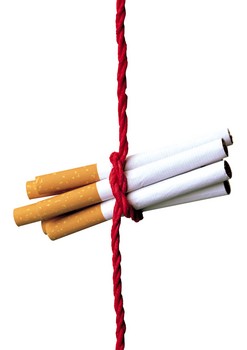Submitted by Anne Landman on
 Most American cigarette makers, including Philip Morris (PM), have used ammonia in their manufacturing processes for decades, to "puff up" tobacco to increase its volume, highlight certain flavors, help hold together reconstituted tobacco sheet and reduce the amount of nicotine. Lesser known is that tobacco companies use ammonia to "freebase" the nicotine in smoke, essentially turning it into "crack nicotine." Freebase nicotine is absorbed by the body more quickly and easily, resulting in a faster, harder "kick" after lighting up. Using ammonia has allowed tobacco companies to lower the tar and nicotine levels in cigarettes while still keeping smokers addicted, a strategy developed to deal with the health fears surrounding cigarettes. PM was the first to use "ammonia technology," applying it to Marlboros in the 1960s. After the change, Marlboro zoomed from a minor brand to a runaway market success, causing other cigarette makers to scramble to discover PM's "secret." After PM was accused of intentionally manipulating the nicotine deliveries of its cigarettes, the company pointed to all the other uses for ammonia to defend itself against the charge.
Most American cigarette makers, including Philip Morris (PM), have used ammonia in their manufacturing processes for decades, to "puff up" tobacco to increase its volume, highlight certain flavors, help hold together reconstituted tobacco sheet and reduce the amount of nicotine. Lesser known is that tobacco companies use ammonia to "freebase" the nicotine in smoke, essentially turning it into "crack nicotine." Freebase nicotine is absorbed by the body more quickly and easily, resulting in a faster, harder "kick" after lighting up. Using ammonia has allowed tobacco companies to lower the tar and nicotine levels in cigarettes while still keeping smokers addicted, a strategy developed to deal with the health fears surrounding cigarettes. PM was the first to use "ammonia technology," applying it to Marlboros in the 1960s. After the change, Marlboro zoomed from a minor brand to a runaway market success, causing other cigarette makers to scramble to discover PM's "secret." After PM was accused of intentionally manipulating the nicotine deliveries of its cigarettes, the company pointed to all the other uses for ammonia to defend itself against the charge.
